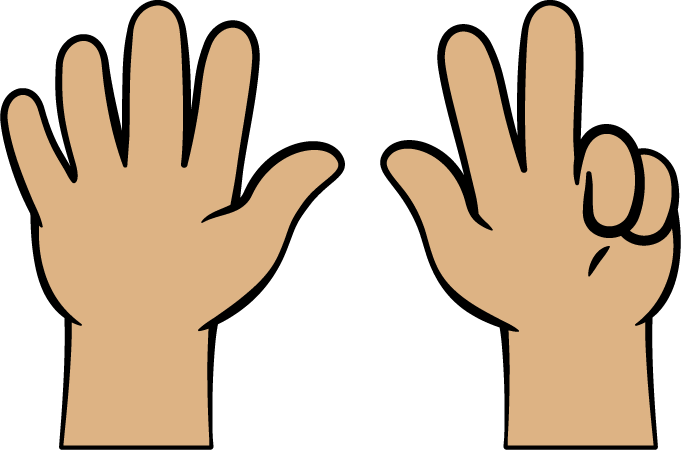Lesson 1
Sort, Count, and Compare Groups of Objects
Warm-up: Choral Count: Count on within 100 (10 minutes)
Narrative
Launch
- “Count by 1, starting at 57.”
- Record as students count.
- Stop counting and recording at 77.
Activity
- “What patterns do you see?”
- 1–2 minutes: quiet think time
- Record responses.
Student Response
For access, consult one of our IM Certified Partners.
Activity Synthesis
- “Name a number that is more than 64.”
- “Name a number that is more than 71.”
- “Name a number that is less than 67.”
- “Name a number that is more than 65.”
Activity 1: Sort, Count, and Compare (10 minutes)
Narrative
The purpose of this activity is for students to sort objects into categories and represent and compare the number of objects in each category.
Supports accessibility for: Attention, Conceptual Processing
Required Materials
Materials to Gather
Required Preparation
- Each student needs a bag with 2 different colored beads or other objects, with up to 10 of each color.
Launch
- Give each student a bag of beads.
- “Sort your beads into two groups.”
- 1 minute: independent work time
Activity
- “How many beads are in each group? Show your thinking using drawings, numbers, or words.”
- 3 minutes: independent work time
- “Compare the number of beads in each group. Which has more beads? Which has fewer beads? Circle the group that has fewer beads.”
- 1 minute: independent work time
- “Tell your partner which group has fewer beads using this sentence: ‘There are fewer _______ than ______.’”
- 1 minute: partner discussion
Student Facing
How many beads are in each group?
Show your thinking using drawings, numbers, or words.
_______________
_______________
Circle the group that has fewer beads.
Student Response
For access, consult one of our IM Certified Partners.
Activity Synthesis
- “In the next activity, we will get to compare the number of beads in our bag to the beads in a partner’s bag.”
Activity 2: Who Has More? [OPTIONAL] (15 minutes)
Narrative
The purpose of this activity is for students to compare groups of up to 20 objects. This activity is optional because the standards do not require students to compare groups of objects or written numbers beyond 10. Students can continue switching bags and counting, representing, and comparing sets of beads, as time permits.
Advances: Conversing
Required Materials
Materials to Gather
Required Preparation
- Students need the bags of beads and their representations from the previous activity.
Launch
- Groups of 2
- “Switch your bag of beads with a partner. Just like you did before, sort the beads into two groups. Figure out how many beads are in each group. Show your thinking using drawings, numbers, or words.”
- 3 minutes: independent work time
Activity
- “Work with your partner to compare the number of beads in each bag. Which bag has more blue beads? Which bag has fewer yellow beads?”
- 3 minutes: partner work time
- “How many beads are in your bag altogether? Write a number to show how many beads there are altogether.”
- 2 minutes: independent work time
- “Work with your partner to compare the number of beads in each bag. Who has more beads in their bag?”
- 3 minutes: partner work time
- Monitor for students who use objects or drawings to share, for example by lining up and matching the objects. Monitor for students who use their knowledge of the count sequence to compare the written numbers.
Student Facing
-
How many beads are in each group?
Show your thinking using drawings, numbers, or words._______________
_______________
-
How many beads are in your bag altogether?
_______________
Student Response
For access, consult one of our IM Certified Partners.
Activity Synthesis
- Invite previously identified students to share.
- “How did the drawings help you figure out who had more beads altogether?”
- “How did the numbers help you figure out who had more beads altogether?”
Activity 3: Centers: Choice Time (20 minutes)
Narrative
- Less, Same, More
- Math Fingers
- Tower Build
- Math Stories
- Which One
Required Materials
Materials to Gather
Required Preparation
- Gather materials from:
- Less, Same, More
- Math Fingers
- Tower Build
- Math Stories
- Which One
Launch
- Groups of 2
- “Today we are going to choose from centers we have already learned.”
- Display the center choices in the student book.
- “Think about what you would like to do first.”
- 30 seconds: quiet think time
Activity
- Invite students to work at the center of their choice.
- 8 minutes: center work time
- “Choose what you would like to do next.”
- 8 minutes: center work time
Student Facing
Choose a center.
Less, Same, More

Math Fingers

Tower Build

Math Stories

Which One

Activity Synthesis
- “What can you do to help you be successful when working in centers? What can your partner(s) do to help you be successful? What can your teacher do?”
Lesson Synthesis
Lesson Synthesis
Draw two representations, labelled Tyler and Priya:
Tyler

Priya

“Tyler and Priya both showed how many red and blue beads they had in their bag. Which drawing do you think makes it easier to figure out if there are fewer blue beads or red beads?” (Tyler’s makes it easier to compare because he wrote the numbers. I know that 8 is less than 9. Priya’s makes it easier to compare because she drew circles like they are in a 10-frame. I can see that there is 1 fewer blue bead.)
Cool-down: Unit 8, Section A Checkpoint (0 minutes)
Cool-Down
For access, consult one of our IM Certified Partners.